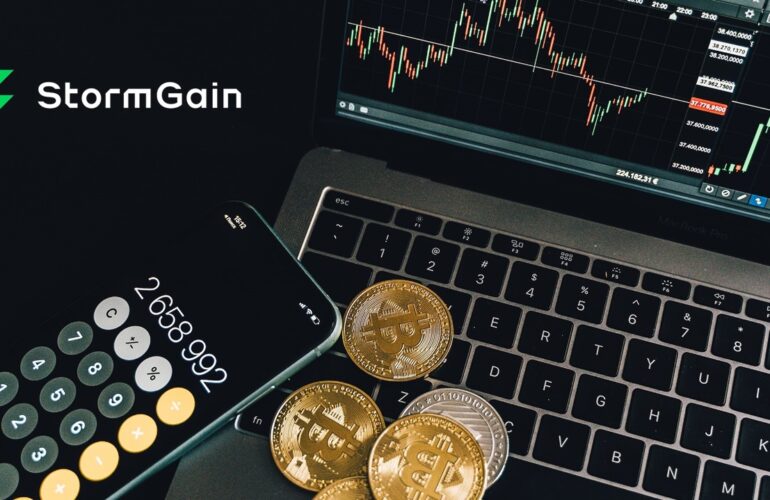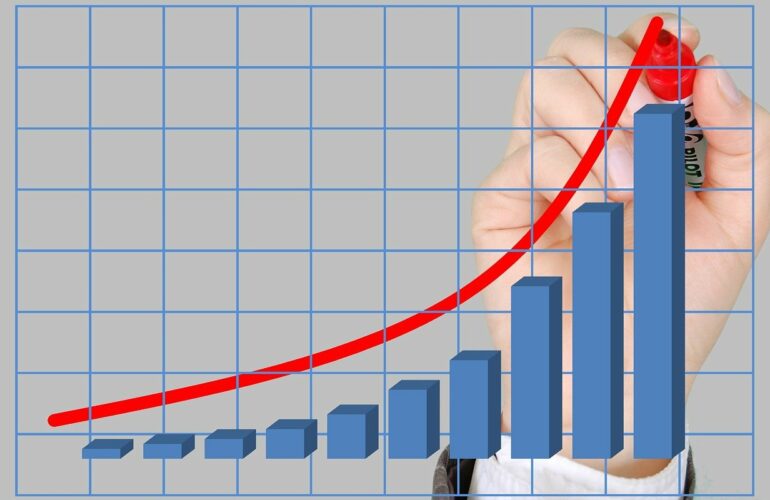1. Introduction
In this opening section, we will offer a concise overview of inflation and its importance in the economy. We’ll explain how inflation impacts consumers, businesses, and policymakers, setting the stage for a deeper understanding of its drivers.
2. Understanding Inflation
Before delving into the changing drivers of inflation, it’s essential to grasp the basic concepts and mechanisms behind rising prices. This section will encompass the definition of inflation, various measurement methods, and the correlation between inflation and monetary policy.
3. Traditional Drivers of Inflation
To establish a foundation, we will explore the traditional drivers of inflation: demand-pull, and cost-push inflation. By understanding these concepts, readers can comprehend the factors that have historically influenced inflationary pressures.
3.1. Demand-Pull Inflation
Demand-pull inflation occurs when the overall demand for goods and services exceeds the available supply, resulting in a rise in prices. We will examine the key factors contributing to demand-pull inflation and explain how they affect inflationary pressures.
3.2. Cost-Push Inflation
Cost-push inflation arises when the expenses associated with production increase, resulting in elevated prices for goods and services. We will delve into the various factors that contribute to cost-push inflation and discuss their impact on the economy.
4. Changing Drivers of Inflation
As the global economy evolves, the drivers of rising prices are undergoing significant transformations. This section will focus on three key drivers that are shaping the inflation landscape: technology and innovation, globalization, and demographic changes.
4.1. Technology and Innovation
Technological advancements and innovation have the potential to disrupt traditional industries and change consumption patterns. We will explore how technological progress can influence rising prices by affecting productivity, business models, and consumer behavior.
4.2. Globalization
Globalization has created a highly interconnected world, impacting the flow of goods, services, and capital. We will examine how globalization influences rising prices through factors such as trade, outsourcing, and the movement of labor.
4.3. Demographic Changes
Demographic shifts, such as aging populations and changing workforce dynamics, can have significant implications for rising prices. We will discuss how demographic changes affect consumption patterns, labor markets, and inflationary pressures.
5. Impact of Changing Drivers
Having examined the changing drivers of inflation, it is crucial to understand their impact on the economy. This section will explore the specific economic consequences of the changing drivers of rising prices. We will analyze how technology and innovation, globalization, and demographic changes affect rates, monetary policy, and overall economic stability.
5.1. Technology and Innovation
The rapid pace of technological advancements and innovation is reshaping industries and economies worldwide. These developments can have both inflationary and deflationary effects.
Technological progress can have contrasting effects on rising prices. On one hand, it can enhance productivity and efficiency, leading to reduced production costs and subsequently lowering inflation. However, on the other hand, new technologies and innovations can generate fresh demands, disrupt conventional markets, and cause price increases.
We will examine case studies and real-world examples to illustrate these effects and highlight the complexities involved.
5.2. Globalization
Globalization has profoundly impacted the movement of goods, services, and capital across borders. It has facilitated international trade, allowed businesses to access global markets, and increased competition. Globalization can influence inflation through various channels. For instance, increased trade can expose domestic markets to foreign competition, leading to lower prices for imported goods and potentially reducing inflation. Conversely, globalization can also result in supply chain disruptions, increased transportation costs, or currency fluctuations, which may contribute to higher inflation. We will explore these dynamics and analyze the overall impact of globalization on inflation.
5.3. Demographic Changes
Demographic shifts, such as changes in population size, age structure, and workforce composition, can significantly affect inflationary pressures. Aging populations in many developed economies, for example, can lead to changes in consumption patterns and increased demand for healthcare services, potentially driving up prices. Additionally, changes in the labor force, such as increased participation of women or immigration, can influence wage dynamics and production costs. We will examine how demographic changes interact with inflation and discuss the implications for monetary policy and economic stability.
6. What Comes Next?
As we consider the changing drivers of inflation, it is crucial to contemplate what the future holds. In this section, we will provide insights into the potential trajectory of inflation based on the evolving drivers discussed earlier. We will analyze the interplay between technology, globalization, and demographics and their likely impact on inflation rates and economic outcomes.
Through the analysis of present patterns and the projection of future scenarios, readers will acquire a more profound comprehension of the prospective challenges and opportunities that await them.
7. Conclusion
Inflation is a complex phenomenon influenced by a multitude of factors. Traditional drivers such as demand-pull and cost-push inflation continue to play a significant role, but the drivers are evolving. Technological advancements, globalization, and demographic changes are reshaping the inflation landscape. Understanding these changing drivers is crucial for policymakers, businesses, and individuals seeking to navigate an increasingly dynamic economic environment. By adapting to the evolving drivers of inflation, stakeholders can better anticipate and respond to future challenges and opportunities.
8. FAQs
How are inflation and interest rates interconnected?
Inflation and interest rates are closely linked. Central banks often adjust interest rates to manage inflationary pressures. Higher inflation can lead to higher interest rates, as central banks aim to curb excessive price increases.
How does inflation affect consumers?
Inflation diminishes the buying power of money, necessitating consumers to spend more in order to sustain their desired standard of living. It can lead to higher prices for goods and services, impacting affordability and household budgets.
What role do expectations play in inflation?
Expectations about future inflation can influence current inflation rates. If individuals and businesses anticipate higher inflation, they may adjust their behavior, such as demanding higher wages or raising prices, thereby contributing to inflationary pressures.
Can inflation be beneficial for the economy?
Inflation at moderate levels can be beneficial as it encourages spending, investments, and economic growth. Furthermore, it can aid in alleviating the burden of debt. However, high or unpredictable inflation can be detrimental to the economy, eroding consumer purchasing power, distorting price signals, and creating economic instability.
How do central banks control inflation?
Central banks use monetary policy tools, such as adjusting interest rates and managing the money supply, to control inflation. By increasing interest rates, they can reduce borrowing and spending, thereby dampening inflationary pressures. Conversely, lowering interest rates can stimulate economic activity and increase inflation when necessary.
Are there any risks associated with the changing drivers of inflation?
While the changing drivers of inflation offer opportunities for economic growth and development, they also pose risks. Technological advancements can lead to job displacement and income inequality. Globalization can create vulnerabilities to economic shocks and disruptions. Demographic changes can strain public resources and impact productivity. It is important to manage these risks through effective policies and strategies.
How can businesses adapt to the changing drivers of inflation?
Businesses can adapt to the changing drivers of inflation by embracing technological advancements and innovation, leveraging globalization opportunities, and understanding demographic trends. This may involve investing in research and development, expanding market reach through international trade, and adjusting business models to meet evolving consumer demands.
What should individuals consider in light of changing inflation drivers?
Individuals should consider the potential impact of changing inflation drivers on their personal finances and investment decisions. It is important to stay informed about technological advancements, globalization trends, and demographic shifts to make informed choices regarding career paths, savings, and investment strategies.
How does inflation impact savings and retirement planning?
Inflation erodes the purchasing power of savings over time. When planning for retirement, individuals must consider the impact of inflation on the future value of savings and investments and may need to adjust their retirement savings goals and investment strategies accordingly to ensure long-term financial security.
What are the implications of changing inflation drivers for government policies?
Changing inflation drivers require policymakers to adapt their strategies and policies accordingly. Governments need to foster an environment conducive to technological innovation, ensure fair and sustainable globalization practices, and address the challenges posed by demographic changes. Effective fiscal and monetary policies can help maintain price stability, promote economic growth, and mitigate potential risks associated with changing inflation drivers.
In conclusion, the drivers of rising prices are undergoing significant changes, influenced by technological advancements, globalization, and demographic shifts. Understanding these changing drivers is crucial for individuals, businesses, and policymakers to navigate the evolving economic landscape. By adapting to these drivers and leveraging the opportunities they present, stakeholders can effectively respond to inflationary pressures and contribute to long-term economic stability and growth.

The Definition of Rising Prices
Rising prices, also known as inflation, are a fundamental economic concept that characterizes the increase in the general level of prices for goods and services within an economy over a specific period. It signifies a decrease in the purchasing power of money, as consumers require more funds to purchase the same quantity of goods and services.
When prices rise, the value of currency diminishes. This occurrence can have far-reaching effects on individuals, businesses, and the overall economy. It erodes the purchasing power of consumers, as they must allocate more of their income to cover the increased costs of essential goods and services. Moreover, rising prices can affect businesses by impacting production costs, potentially reducing profit margins, and influencing investment decisions.
Central banks and policymakers monitor and manage rising prices through monetary policy tools, such as adjusting interest rates and managing the money supply. Their aim is to maintain price stability and promote sustainable economic growth. By controlling rising prices, they strive to strike a balance between fostering economic activity and preventing excessive price increases.
Several factors contribute to rising prices. Demand-pull inflation occurs when aggregate demand surpasses the supply of goods and services, leading to increased competition and subsequent price rises. On the other hand, cost-push inflation results from increased production costs, such as higher wages, raw material prices, or taxes, forcing businesses to raise their prices to maintain profitability.
Understanding the causes and effects of rising prices is crucial for individuals, businesses, and policymakers alike. It allows them to make informed decisions regarding savings, investments, and economic policy. Additionally, managing inflation expectations becomes essential, as it can influence consumer behavior and impact future inflation rates.
In conclusion, rising prices, or inflation, refers to the persistent increase in the general price level of goods and services. It affects individuals’ purchasing power, business operations, and overall economic stability. By actively monitoring and managing rising prices, policymakers strive to maintain a balance between economic growth and price stability, ensuring a favorable environment for sustainable development.






